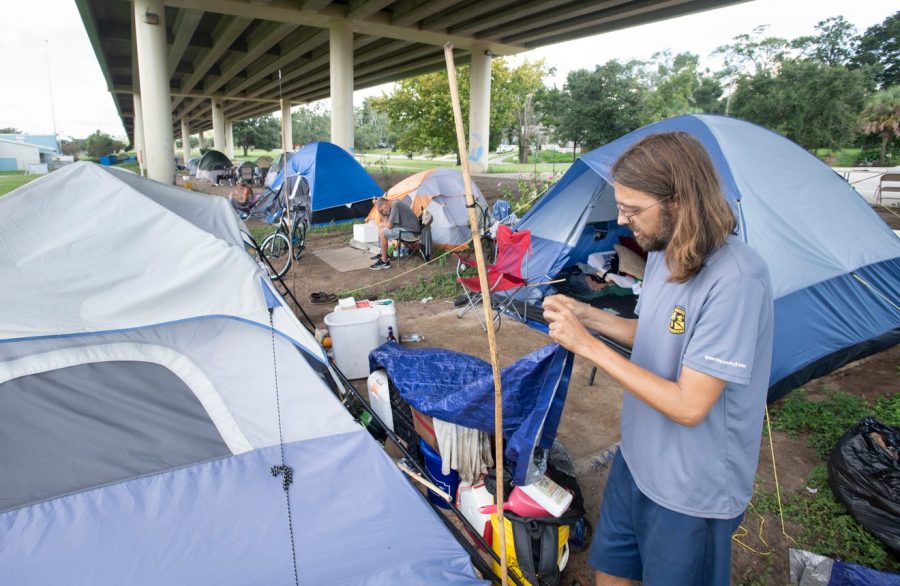What’s next for Pensacola’s homeless community
October 7, 2021
Back in May, Robert Marbut, executive director of the U.S. Interagency Council on Homelessness, spoke with WUWF regarding Pensacola’s homeless community. He observed the homeless community this year and compared it to what he saw when he observed the same areas in 2014 and 2015.
According to Marbut Pensacola’s homelessness is now “at the edge of a crisis.”
Homeless encampments are growing, and some indicators point towards violence growing inside these encampments. Marbut fears that if the homeless community is not stabilized and taken care of soon, it will start to “bleed into the community.”
With hurricane season in full swing, it is even more important to get the homeless community stabilized and taken care of.
Homeless individuals do not have shelter to provide them safety during the monstrous storms that strike our Gulf Coast. Clean water can be difficult to come across on a normal day for the homeless, but when an entire area is struggling to survive the aftermath of a hurricane, clean water can become even more sparing. Storms show no sign of slowing down as climate change continues, meaning living conditions and health risks are projected to get worse for the homeless.
The Homelessness Reduction Task Force of Northwest Florida has come together since Marbut’s report to advocate almost $3 million from the American Rescue Plan Act. The Pensacola News Journal wrote an article highlighting the goals of this plan.
About $900,000 would go towards physical housing solutions. The task force plans to build a “pallet village” (PNJ, 2021) where residents would be required to meet certain guidelines that would aid in their improvement and the upkeep of new infrastructure.
The Re-Entry Alliance of Pensacola (REAP) also wants to put more of its efforts towards helping the homeless. Some of this plan’s funding will go towards “extending its newly opened women and children’s shelter and to launch a 5-acre campsite for the homeless population,” REAP said.
About $1.4 million will go towards case management/counseling and medical rehabilitation.
The task force plans to have “one master’s in social work student and three social work students” (PNJ, 2021) stationed at various homeless shelter sites throughout the year to help with case management and counseling of the homeless community. The Waterfront Water Mission also plans to take part in this area of the plan by providing beds to homeless individuals that have just been released from surgery or some other illness. A “licensed mental health employee” (PNJ, 2021) will also be on-site at the Waterfront Water Mission.
There is still a decent amount of money left in the plan that has not yet been distributed towards a certain area, however, there is still time for those arrangements to be made. The Pensacola City Council has not released an official date for when the task force’s plan will be voted on.
The goal of this plan is to help those who are struggling with homelessness get back on their feet, while simultaneously helping our community stay clean and safe.


